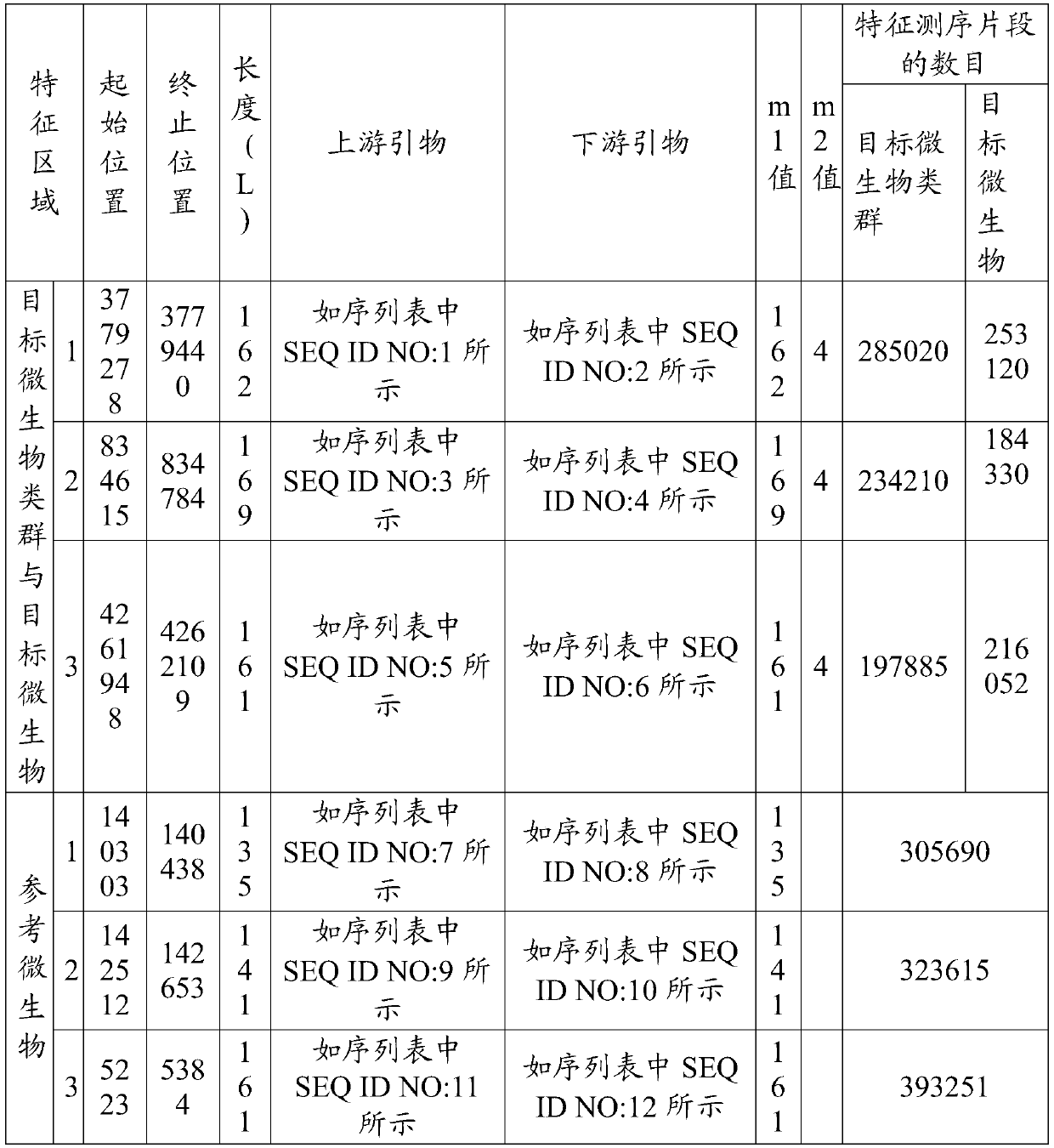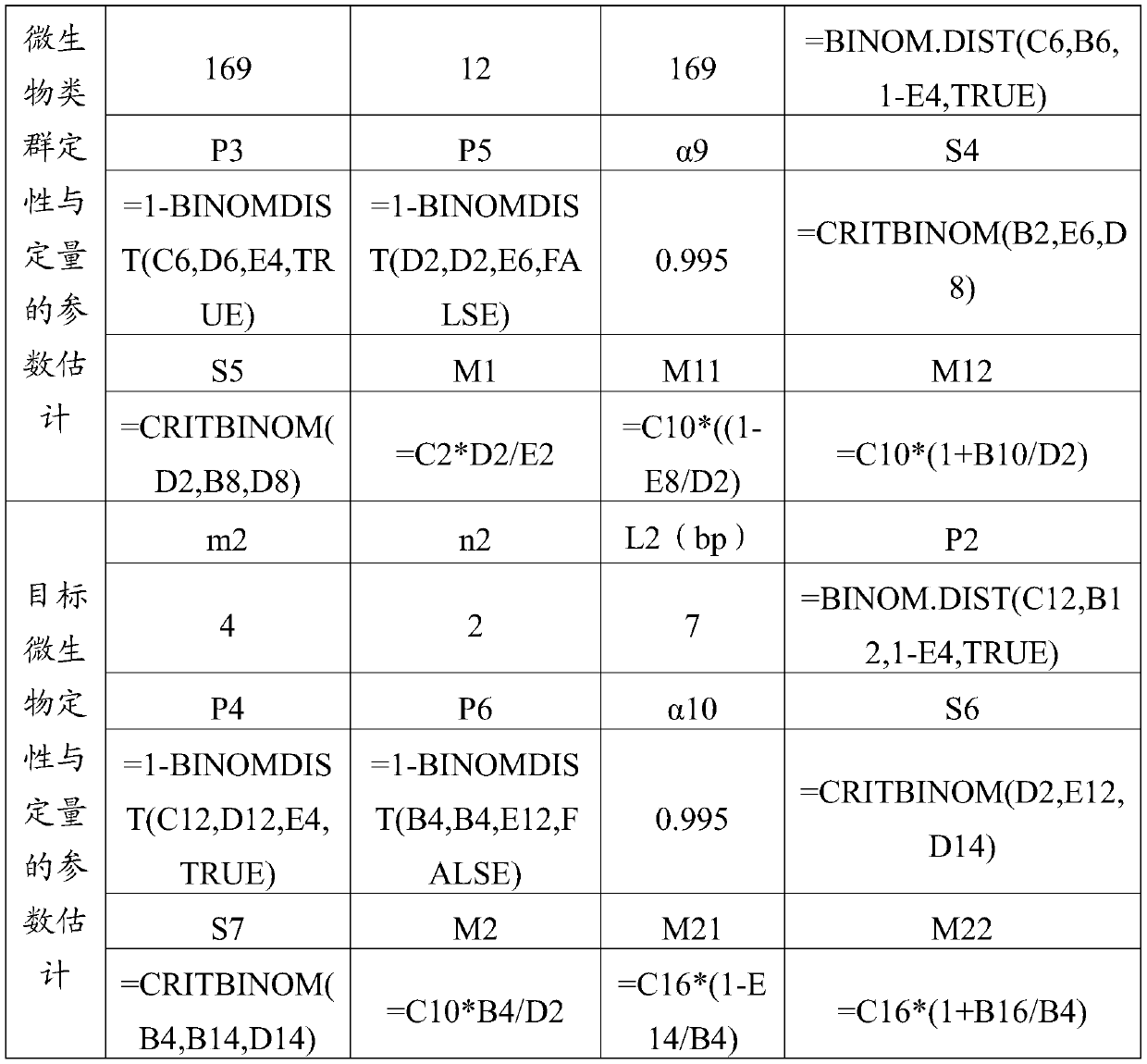A qualitative and quantitative detection method for non-diagnostic microorganisms
A technology for target microorganisms and microorganisms, which is applied in the determination/inspection of microorganisms, biochemical equipment and methods, etc., can solve the problems of inaccurate qualitative and quantitative detection of microorganisms, and achieve the effect of fine detection results, simple detection process, and probability guarantee
- Summary
- Abstract
- Description
- Claims
- Application Information
AI Technical Summary
Problems solved by technology
Method used
Image
Examples
Embodiment 1
[0039] Embodiment 1. Identification of rice bacterial blight
[0040] Example 1 of the present invention From the Lingshui Experimental Base of Hainan, Chinese Academy of Sciences, rice leaves naturally infected with bacterial blight were taken as samples to be tested. Bacteria were qualitatively and quantitatively detected.
[0041] Step 1: Determine the target microbial groups, target microorganisms and non-target organisms in the sample to be tested, and reference microorganisms that do not exist in the sample to be tested. The specific methods are as follows:
[0042] The number of target microbial groups is ≥ 1, and each target microbial group includes ≥ 0 target microorganisms; target microorganisms can be bacteria, viruses, fungi, actinomycetes, rickettsia, mycoplasma, chlamydia, spirochetes, algae and protists at least one of animals. The purpose of the embodiment of the present invention is to identify rice bacterial blight, therefore, only concerned about the bacte...
Embodiment 2
[0088] Embodiment 2. Identification of Human Fecal Microorganisms
[0089] The sample to be tested in the second embodiment of the present invention is human feces, which is taken from a patient diagnosed by a doctor with intestinal diseases, and the detection of microorganisms in the feces is to provide a basis for a treatment plan. This implementation is similar to the method in the first embodiment, and the methods, parameters and results that are not mentioned are the same as those in the first embodiment, so they will not be repeated.
[0090] Step 1: Determine target microbial groups, target microorganisms and non-target organisms in the sample to be tested, and reference microorganisms that do not exist in the sample to be tested.
[0091] The purpose of this example is to identify Salmonella enterica in the sample to be tested, its Latin name is Salmonellaenterica, and on NCBI (National center for biotechnology information, National Center for Biotechnology Information...
Embodiment 3
[0106] Example 3. Identification of microorganisms in triangular lake water
[0107] The sample to be tested in this embodiment is the water body in the Triangle Lake in Wuhan, Hubei Province. The purpose of detecting microorganisms in the water body is to monitor the pollution of the water body by human and animal feces through the amount of microorganisms. This implementation is similar to the method in the first embodiment, and the methods, parameters and results that are not mentioned are the same as those in the first embodiment, so they will not be repeated.
[0108] Step 1: Determine the target microbial groups, target microorganisms and non-target organisms in the sample to be tested, and reference microorganisms that do not exist in the sample to be tested. The specific methods and results are the same as those in the second embodiment.
[0109] Step 2: According to the reference genome sequence of the target microorganism group, the reference genome sequence of the t...
PUM
 Login to View More
Login to View More Abstract
Description
Claims
Application Information
 Login to View More
Login to View More - R&D Engineer
- R&D Manager
- IP Professional
- Industry Leading Data Capabilities
- Powerful AI technology
- Patent DNA Extraction
Browse by: Latest US Patents, China's latest patents, Technical Efficacy Thesaurus, Application Domain, Technology Topic, Popular Technical Reports.
© 2024 PatSnap. All rights reserved.Legal|Privacy policy|Modern Slavery Act Transparency Statement|Sitemap|About US| Contact US: help@patsnap.com










